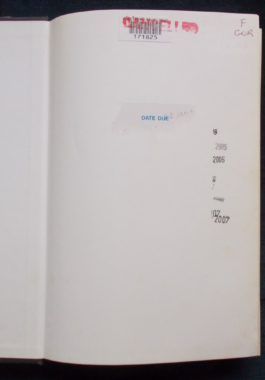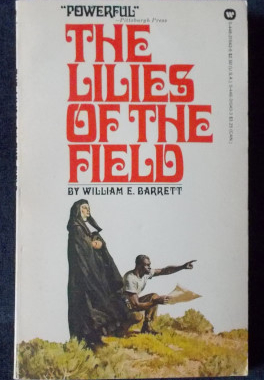The bizarre and hauntingly beautiful sketchbook diary of Charles Altamont Doyle, father of Arthur Conan Doyle, who in 1889 was confined to the dreary Montrose Royal Lunatic Asylum in Scotland. He would spend the rest of his life in asylums but the question remains: was he actually mad? Readers may judge for themselves: the diary, long forgotten by the family and auctioned off in a job lot of books in 1955, then stored for another twenty years - is a wondrous blend of words and watercolour, facts and fancies and exquisitely detailed depictions of fairies and birds. At the core of the quips and Punch-like cartoons is a desperately lonely man, struggling to hold onto reality by facing his fears and fantasies through the medium of his art. Arthur's biographers have had very little to say about Charles or the circumstances that led the family to institutionalise him; what clues might the diary hold? Beautiful colour illustrations. Cover art by Colin Lewis.
- Sorry, this product is unavailable.
-
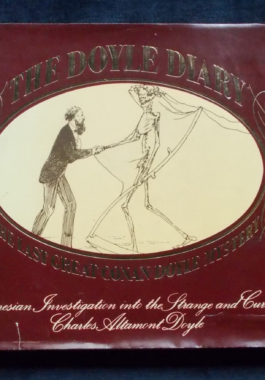
-

The Dupe: Robert S. Close
$15.00An Australian yarn of a man who fooled himself. A young ship's apprentice loses his indentures by missing his ship because of drunkenness and, demoted to common seaman, is taken on the windjammer Laconda for a voyage from Melbourne to Boston around the Horn. He tries to bolster his self-conceit by building a reputation for toughness and assumes responsibility for the murder of the brutal first mate, Bates. His shipmates' awe is gratifying - until this deception rebounds. -
 A story of a German spy in the Great War.
A story of a German spy in the Great War. -
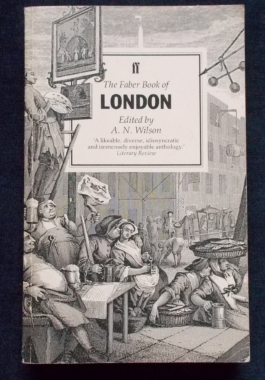 From the Great Fire of 1666 to the Blitz of the Second World War, from the building of the Tower of London to the building of Canary Wharf, London has always been much more than just a capital city. It's an eclectic, teeming, vital town which prompted Samuel Johnson to declare: 'When a man is tired of London, he is tired of life.' There's the seedy rather than the smart, the outcast rather than the established and the bizarre rather than the beautiful. Contributors include G.K. Chesterton, Daniel Defoe, Hilaire Belloc, Charles Dickens, Thomas Hardy, Michael Moorcock, Samuel Pepys, Edith Sitwell, H.G. Wells and many more. A view of London that spans the centuries, with such intriguing chapter titles as The Face On Waterloo Steps; London Molehills; Mobs, Marches, Riots and Affrays; Clubs, Taverns and Coffee Houses and 'When A Man Is Tired Of London'.
From the Great Fire of 1666 to the Blitz of the Second World War, from the building of the Tower of London to the building of Canary Wharf, London has always been much more than just a capital city. It's an eclectic, teeming, vital town which prompted Samuel Johnson to declare: 'When a man is tired of London, he is tired of life.' There's the seedy rather than the smart, the outcast rather than the established and the bizarre rather than the beautiful. Contributors include G.K. Chesterton, Daniel Defoe, Hilaire Belloc, Charles Dickens, Thomas Hardy, Michael Moorcock, Samuel Pepys, Edith Sitwell, H.G. Wells and many more. A view of London that spans the centuries, with such intriguing chapter titles as The Face On Waterloo Steps; London Molehills; Mobs, Marches, Riots and Affrays; Clubs, Taverns and Coffee Houses and 'When A Man Is Tired Of London'. -
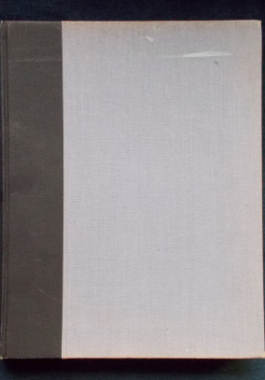
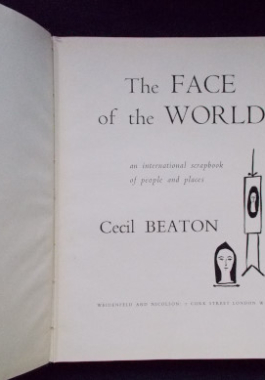 Cecil Beaton travelled the world, photographing the changes and signs of recovery that took place post World War II and of the active talented people from the fields of art, politics and literature who were responsible for much of the tone, tenor and societal change in that decade. Beaton describes his book as a 'pot-pourri' of pictures and texts '...gathered together in the hope of creating some sort of impression of what might be called a decade of revival.' Illustrated with sketches and photographs by Cecil Beaton.
Cecil Beaton travelled the world, photographing the changes and signs of recovery that took place post World War II and of the active talented people from the fields of art, politics and literature who were responsible for much of the tone, tenor and societal change in that decade. Beaton describes his book as a 'pot-pourri' of pictures and texts '...gathered together in the hope of creating some sort of impression of what might be called a decade of revival.' Illustrated with sketches and photographs by Cecil Beaton. -


The Falcon: E.V. Timms
$10.00A tale set in the reign of Charles II - kings and princes, cavaliers and courtesans, flashing blades and raking shot from tall ships. There are plots and counter-plots simmering under the glittering mask of court life and all Englishmen see a deadly threat in the ambitions of Louis XIV pf France. First published as Whitehall in 1931. -

 A wonderful, charming book on the flowers and gardens of Japan - not just any tourist book, but one which also discloses the spirituality behind Japanese garden plans and why they are planned as they are. It was published in 1908 and has fifty beautiful colour illustrations. (See gallery photos for artwork examples) From Chapter II: Stones, Garden Ornaments and Fences. Stones and rocks are such important features in all Japanese gardens that when choosing the material for the making of a landscape garden, however large or however small, the selection of the stones would appear to be the primary consideration. Their size must be in perfect proportion with the house and grounds which they are to transform into a natural landscape, and they will give the scale for all the other materials used - the lanterns, bridges, and water-basins, and even the trees and fences. Their number may vary from five important stones to as many as 138, each with its especial sense and function. I think the correct position and placing of the stones is the part of the art which it would be most difficult for a foreigner to accomplish: the mere names and special functions of the stones would require years of careful study. To the eye of a Japanese one stone wrongly placed would upset all the balance and repose of the picture. Large rocks and boulders seem to be essential for the success of a large garden, and are used to suggest mountains, hills, and the rocks of the natural scene; any very fantastic and artificial looking rocks are avoided, for fear they should give an appearance of unreality to the landscape. The fancy of giving sex to certain stones, and in temple grounds of assigning holy attributes and even of giving them the names of Buddhist deities, dates from very early days, and this custom of applying a religious meaning to the most important rocks survives to this day. Mr. Conder tells us that "formerly it was said that the principal boulders of a garden should represent the Ku, or Nine Spirits of the Buddhist pantheon, five being of standing and four of recumbent..."
A wonderful, charming book on the flowers and gardens of Japan - not just any tourist book, but one which also discloses the spirituality behind Japanese garden plans and why they are planned as they are. It was published in 1908 and has fifty beautiful colour illustrations. (See gallery photos for artwork examples) From Chapter II: Stones, Garden Ornaments and Fences. Stones and rocks are such important features in all Japanese gardens that when choosing the material for the making of a landscape garden, however large or however small, the selection of the stones would appear to be the primary consideration. Their size must be in perfect proportion with the house and grounds which they are to transform into a natural landscape, and they will give the scale for all the other materials used - the lanterns, bridges, and water-basins, and even the trees and fences. Their number may vary from five important stones to as many as 138, each with its especial sense and function. I think the correct position and placing of the stones is the part of the art which it would be most difficult for a foreigner to accomplish: the mere names and special functions of the stones would require years of careful study. To the eye of a Japanese one stone wrongly placed would upset all the balance and repose of the picture. Large rocks and boulders seem to be essential for the success of a large garden, and are used to suggest mountains, hills, and the rocks of the natural scene; any very fantastic and artificial looking rocks are avoided, for fear they should give an appearance of unreality to the landscape. The fancy of giving sex to certain stones, and in temple grounds of assigning holy attributes and even of giving them the names of Buddhist deities, dates from very early days, and this custom of applying a religious meaning to the most important rocks survives to this day. Mr. Conder tells us that "formerly it was said that the principal boulders of a garden should represent the Ku, or Nine Spirits of the Buddhist pantheon, five being of standing and four of recumbent..." -


Jean de Mer is an Acadian Ranger - an unofficial seigneur of lands around Minas Basin. After three years' absence he returns to find his son Marc in trouble with a French partisan leader known as the Black Abbé. Taken captive, Marc is to be tried as a spy. Father and son make a quick escape and plan to expose the treacherous priest. When Marc is wounded, Jean sets out on a perilous canoe journey with a young English woman to rescue her child from the Black Abbé. Set in the years leading up to the 1755 expulsion of the Acadians.
-

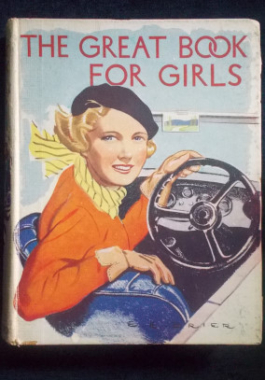 In this volume; The Rest Cure, Anne Page; Caroline And The Count, Jocelyn Oliver; A Bit Of History, D. Dike; The Desert Of Arabia, J.T. Williams; S.O.S., Thura Lifford; The Secret Of The Lobster Pots, Ierne T. Plunket; Cricket For Girls, Marjorie Pollard; The Saving Of The 'Undine', Beryl Irving; The Smugglers Of Portincross, Dorita Fairlie Bruce; It Flowered For Me Alone, Thora Stowell; Gillian's Choice, Pamela Tynan Hinkson; Captain's Roll Of Honour, Beryl C. Lawley; That Sort Of Girl, Peggy Judge. With colour plates and line drawing illustrations.
In this volume; The Rest Cure, Anne Page; Caroline And The Count, Jocelyn Oliver; A Bit Of History, D. Dike; The Desert Of Arabia, J.T. Williams; S.O.S., Thura Lifford; The Secret Of The Lobster Pots, Ierne T. Plunket; Cricket For Girls, Marjorie Pollard; The Saving Of The 'Undine', Beryl Irving; The Smugglers Of Portincross, Dorita Fairlie Bruce; It Flowered For Me Alone, Thora Stowell; Gillian's Choice, Pamela Tynan Hinkson; Captain's Roll Of Honour, Beryl C. Lawley; That Sort Of Girl, Peggy Judge. With colour plates and line drawing illustrations. -
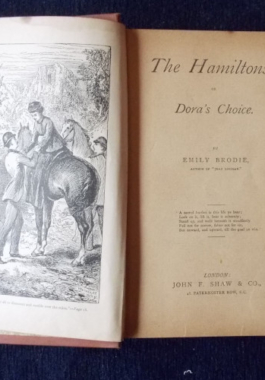
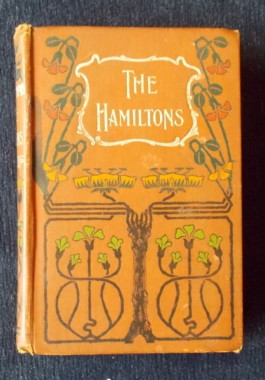 Weddings, disappointments, Christmas, sea storms and exotic India are all involved in what seems to be a very dramatic narrative. First published in 1879 and with four editions between 1879 and 1880, a review from c. 1891/1892 states that: 'Miss Brodie's stories have that savour of religious influence and teaching which makes them valuable as companions of the home.'
Weddings, disappointments, Christmas, sea storms and exotic India are all involved in what seems to be a very dramatic narrative. First published in 1879 and with four editions between 1879 and 1880, a review from c. 1891/1892 states that: 'Miss Brodie's stories have that savour of religious influence and teaching which makes them valuable as companions of the home.' -

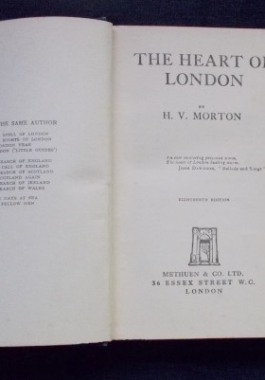 A collection of some of H.V. Morton's columns for the Daily Express, which is still in print today almost 100 years later. Morton never did the tourist route; instead he went off the beaten track to look into what really made a city. What he found was London's wonderful diversity of people against intriguing backgrounds. Among other places, he visits the docks, the Caledonian Market, Petticoat Lane, the Free Cancer Hospital, observes the nannies and their charges in Kensington Gardens, tea-shops, St. Martin's-in-the-Fields, the Lost Property Office and many other places.
A collection of some of H.V. Morton's columns for the Daily Express, which is still in print today almost 100 years later. Morton never did the tourist route; instead he went off the beaten track to look into what really made a city. What he found was London's wonderful diversity of people against intriguing backgrounds. Among other places, he visits the docks, the Caledonian Market, Petticoat Lane, the Free Cancer Hospital, observes the nannies and their charges in Kensington Gardens, tea-shops, St. Martin's-in-the-Fields, the Lost Property Office and many other places. -
 The story of the most daring cavalry operation of the American Civil War. A thousand silent horsemen hurry southwards on dusty Mississippi Roads - hungry, filthy and red-eyed with fatigue, too tired to speak. They are Marlowe's brigade, leaving behind them a trail of fire and chaos. The war between the States is in its third bitter year, and a rebel force fed by a single railroad artery holds out. Marlowe's brigade gets the job of cutting that lifeline - for good.
The story of the most daring cavalry operation of the American Civil War. A thousand silent horsemen hurry southwards on dusty Mississippi Roads - hungry, filthy and red-eyed with fatigue, too tired to speak. They are Marlowe's brigade, leaving behind them a trail of fire and chaos. The war between the States is in its third bitter year, and a rebel force fed by a single railroad artery holds out. Marlowe's brigade gets the job of cutting that lifeline - for good. -
 Originally published over 300 years ago as The Compleat Housewife - and 100 years before the famous Mrs Beeton - Eliza Smith, drawing on her vast experience while 'constantly employed by fashionable and noble families' compiled this collection of over 600 recipes which had 'met with general approbation'. There are also remedies and cures for the 'benefit of every accomplished noblewoman' for every ailment from the bite of a mad dog to a case of pimples. This book was not only famous in Britain, but also in America where it has the distinction of being the first ever cookery book to be published there. N.B. Please exercise caution if you should decide to try any of the remedies mentioned; this is a 300 year old book and some of the recommendations and ingredients therein would definitely NOT be advisable to try.
Originally published over 300 years ago as The Compleat Housewife - and 100 years before the famous Mrs Beeton - Eliza Smith, drawing on her vast experience while 'constantly employed by fashionable and noble families' compiled this collection of over 600 recipes which had 'met with general approbation'. There are also remedies and cures for the 'benefit of every accomplished noblewoman' for every ailment from the bite of a mad dog to a case of pimples. This book was not only famous in Britain, but also in America where it has the distinction of being the first ever cookery book to be published there. N.B. Please exercise caution if you should decide to try any of the remedies mentioned; this is a 300 year old book and some of the recommendations and ingredients therein would definitely NOT be advisable to try. -

 A series of books encompassing visual images of the decades and the changes the world underwent. These are not just iconic images of famous events and people, but images of everyday people doing everyday things all over the world. The 1930s: Old dreams turned to dust and new dreams turned into nightmares. The nations of Europe marched to war, Strikes and lockouts, 'talkies' and skyscrapers, dictators and New Deals...a unique collection by the world's finest photographers. The 1940s: A decade divided: the world at war, its triumphs and tragedies, victories and victims. Peace, rest, recovery and rebuilding. New hopes and new problems - the tumult of history through the eye of the camera. The 1950s: A world in the icy grip of the Cold War. The Shadow of the Bomb. Little Rock and Notting Hill, the Hungarian Uprising, Suez and Cyprus. The conquest of space - all the triumph and tragedy of a tense and violent age. The 1960s: The Swinging Sixties, a maelstrom of sex, drugs and rock 'n' roll, Pop and the Pill, the Maxi and the Mini, the Stones and the Beatles, Sharpeville, Dallas, Vietnam - the agony and the ecstasy, captured as only the camera can. The 1970s: Terrorism and violence from Beirut to Belfast, from Cyprus to Soweto, from Munich to Mogadishu. The Ayatollah Khomeini, Tricky Dicky Nixon, General Ami, Pol Pot - a young Michale Jackson and an ageing Elvis - explosively revealed by the camera's silent witness.
A series of books encompassing visual images of the decades and the changes the world underwent. These are not just iconic images of famous events and people, but images of everyday people doing everyday things all over the world. The 1930s: Old dreams turned to dust and new dreams turned into nightmares. The nations of Europe marched to war, Strikes and lockouts, 'talkies' and skyscrapers, dictators and New Deals...a unique collection by the world's finest photographers. The 1940s: A decade divided: the world at war, its triumphs and tragedies, victories and victims. Peace, rest, recovery and rebuilding. New hopes and new problems - the tumult of history through the eye of the camera. The 1950s: A world in the icy grip of the Cold War. The Shadow of the Bomb. Little Rock and Notting Hill, the Hungarian Uprising, Suez and Cyprus. The conquest of space - all the triumph and tragedy of a tense and violent age. The 1960s: The Swinging Sixties, a maelstrom of sex, drugs and rock 'n' roll, Pop and the Pill, the Maxi and the Mini, the Stones and the Beatles, Sharpeville, Dallas, Vietnam - the agony and the ecstasy, captured as only the camera can. The 1970s: Terrorism and violence from Beirut to Belfast, from Cyprus to Soweto, from Munich to Mogadishu. The Ayatollah Khomeini, Tricky Dicky Nixon, General Ami, Pol Pot - a young Michale Jackson and an ageing Elvis - explosively revealed by the camera's silent witness. -

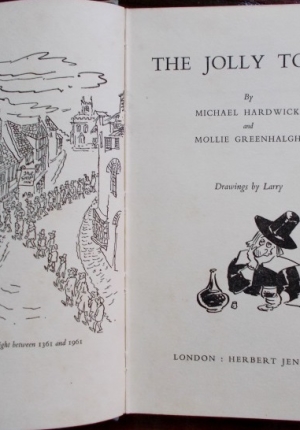 A hilarious illustrated English 'history' of drinking, with illustrations by Larry and fanciful chapter headings such as: British Boozing Begins; Roman Revels; Saxon Swilling; The Birth of Brewing and Strong Bere for the Quene among many other humourous references.
A hilarious illustrated English 'history' of drinking, with illustrations by Larry and fanciful chapter headings such as: British Boozing Begins; Roman Revels; Saxon Swilling; The Birth of Brewing and Strong Bere for the Quene among many other humourous references. -
 Everybody knows Jones: His house is better...his car is bigger... Whatever you may have, Jones has it better, bigger, smaller or the latest model or not at all - according to the latest fashion. But how does Jones do it? The only way to keep up with Jones is to get out of your pre-allotted pigeon-hole and BE Jones! A hilarious contemporary satire of life in the late 1950s on a topic that everyone still understands - envying thy neighbour! Illustrations by Norman Mansbridge.
Everybody knows Jones: His house is better...his car is bigger... Whatever you may have, Jones has it better, bigger, smaller or the latest model or not at all - according to the latest fashion. But how does Jones do it? The only way to keep up with Jones is to get out of your pre-allotted pigeon-hole and BE Jones! A hilarious contemporary satire of life in the late 1950s on a topic that everyone still understands - envying thy neighbour! Illustrations by Norman Mansbridge. -
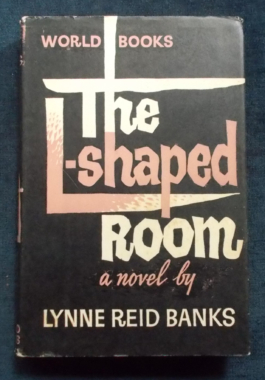
A young woman finds herself pregnant 'on the wrong side of the blanket' in 1961. The attitude to single mothers was very different then; her father kicks her out of their home and she moves into a dingy rooming house. Against her will she becomes involved with the characters who live there, some of them who are outcasts in their own way - Toby, the budding Jewish writer; John, the huge, gentle Negro musician and Mavis, the old dear living in a room stuffed full of souvenirs of a theatrical past. When she decides that she will keep her baby rather than offer him for adoption or have an abortion - highly illegal then - she begins to receive unexpected help from this odd assortment as well as her boss, an eccentric in his own right. A very well told story.
-

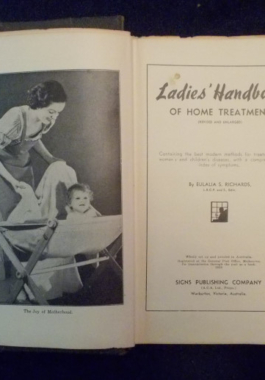 '...Containing the best modern methods for treatment of women's and children's diseases with a comprehensive index of symptoms.' Some listings of this book designate it as being first published in 1912 ( the date of the Australian Copyr4ight Act) but it was in fact first published in 1917 (Reference: https://encyclopedia.adventist.org/article?id=183E). Earlier editions are credited to Eulalia and Franklin Richards, her husband (also a doctor). Later revised and expanded editions are credited to Eulalia Richards only. A comprehensive manual for home health, it covers courtship and marriage; what is necessary for a successful marriage; sex; nutrition for mothers-to-be and children; chest, heart and blood diseases; urinary and genital diseases; nervous disorders and skin diseases; ear, nose, throat and eye problems; infectious diseases; tuberculosis; the relationship between health and women's dress fashions; bladder and bowel issues; puberty, menstruation and menopause; venereal diseases; health in middle life and home/first aid treatments. There's a great deal here that is commonsense, some treatments that definitely would NOT be used today and much to interest the medical student/historian. Illustrated.
'...Containing the best modern methods for treatment of women's and children's diseases with a comprehensive index of symptoms.' Some listings of this book designate it as being first published in 1912 ( the date of the Australian Copyr4ight Act) but it was in fact first published in 1917 (Reference: https://encyclopedia.adventist.org/article?id=183E). Earlier editions are credited to Eulalia and Franklin Richards, her husband (also a doctor). Later revised and expanded editions are credited to Eulalia Richards only. A comprehensive manual for home health, it covers courtship and marriage; what is necessary for a successful marriage; sex; nutrition for mothers-to-be and children; chest, heart and blood diseases; urinary and genital diseases; nervous disorders and skin diseases; ear, nose, throat and eye problems; infectious diseases; tuberculosis; the relationship between health and women's dress fashions; bladder and bowel issues; puberty, menstruation and menopause; venereal diseases; health in middle life and home/first aid treatments. There's a great deal here that is commonsense, some treatments that definitely would NOT be used today and much to interest the medical student/historian. Illustrated. -
 Those of us of a certain age will remember the Ladybird children's book series which, through use of simple vocabulary and images, informed children of the world around them and how it worked. Like everything else, the Ladybird books underwent a political correctness change but are still in print. However, this offering is for grown-ups...This delightful book is the latest in the series of Ladybird books which have been specially planned to help grown-ups with the world about them.The large clear script, the careful choice of words, the frequent repetition and the thoughtful matching of text with pictures all enable grown-ups to think they have taught themselves to cope. This entry in the series informs grown-ups how to plan and execute the perfect 'sickie'.
Those of us of a certain age will remember the Ladybird children's book series which, through use of simple vocabulary and images, informed children of the world around them and how it worked. Like everything else, the Ladybird books underwent a political correctness change but are still in print. However, this offering is for grown-ups...This delightful book is the latest in the series of Ladybird books which have been specially planned to help grown-ups with the world about them.The large clear script, the careful choice of words, the frequent repetition and the thoughtful matching of text with pictures all enable grown-ups to think they have taught themselves to cope. This entry in the series informs grown-ups how to plan and execute the perfect 'sickie'. -
 An exquisite little pocket-size book containing a wealth of information by way of prose and poetry about the meanings of flowers, the legends surrounding them and the origins of their names. Beautifully illustrated with Victoriana images and delicately scented with Penhaligon's Violets. Uncommon title.
An exquisite little pocket-size book containing a wealth of information by way of prose and poetry about the meanings of flowers, the legends surrounding them and the origins of their names. Beautifully illustrated with Victoriana images and delicately scented with Penhaligon's Violets. Uncommon title. -
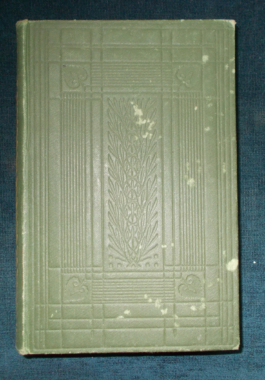
 What a world of dreams is this Pompeii, where each one seeks to be what he is not... Pompeii, pleasure ground of the wealthy, decadent and rife with corruption. A cast of characters to rival any soap opera: Clodius, poor yet noble, in love with Julia, the daughter of nouveau riche merchant Diomed, who is trying to forget that his grandfather was ever a slave; Glaucus, the young and wealthy Greek playboy who falls in love with Ione, a wealthy orphan under the wardship of Arbaces, High Priest of Isis, who will stop at nothing to secure Ione and her fortune for the temple; Nydia, the blind slave girl who sells her flowers and yearns for Glaucus; Lydon, the gladiator, the darling of Pompeii, fighting to win enough money to buy the freedom of Medon, his father; there is Apaecides, Ione's brother who learns of Christ from Olinthus, the sail maker...and still more in the cast that make up the last days of the city that was believed to be the wickedest place on earth.
What a world of dreams is this Pompeii, where each one seeks to be what he is not... Pompeii, pleasure ground of the wealthy, decadent and rife with corruption. A cast of characters to rival any soap opera: Clodius, poor yet noble, in love with Julia, the daughter of nouveau riche merchant Diomed, who is trying to forget that his grandfather was ever a slave; Glaucus, the young and wealthy Greek playboy who falls in love with Ione, a wealthy orphan under the wardship of Arbaces, High Priest of Isis, who will stop at nothing to secure Ione and her fortune for the temple; Nydia, the blind slave girl who sells her flowers and yearns for Glaucus; Lydon, the gladiator, the darling of Pompeii, fighting to win enough money to buy the freedom of Medon, his father; there is Apaecides, Ione's brother who learns of Christ from Olinthus, the sail maker...and still more in the cast that make up the last days of the city that was believed to be the wickedest place on earth. -
 The epic story of the two Biblical cities ruled and ruined by a corrupt, sadistic queen. Lot is commanded by God to take his people to the valley of the Jordan - but the queen is determined to lure him into her web of voluptuous, forbidden temptations. Cover art represents Stewart Granger, Pier Angeli, Stanley Baker and others from the Rank Film production.
The epic story of the two Biblical cities ruled and ruined by a corrupt, sadistic queen. Lot is commanded by God to take his people to the valley of the Jordan - but the queen is determined to lure him into her web of voluptuous, forbidden temptations. Cover art represents Stewart Granger, Pier Angeli, Stanley Baker and others from the Rank Film production. -
 Volume III of the Industrial and Social History series. The history of our ancestors in the age of the chase - the time of hunting that necessitated invention of new weapons, the study of herd migration, the re-designing of tool and much more, told in an easy fictional fashion with plenty of rotogravure illustrations. First published in 1911, this is the 1938 edition and this book is still in print today.
Volume III of the Industrial and Social History series. The history of our ancestors in the age of the chase - the time of hunting that necessitated invention of new weapons, the study of herd migration, the re-designing of tool and much more, told in an easy fictional fashion with plenty of rotogravure illustrations. First published in 1911, this is the 1938 edition and this book is still in print today. -
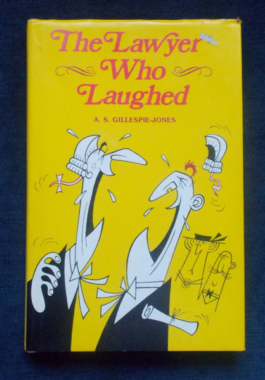 Humour can arise at the oddest moments during the grimmest moments of Court trials. This is a miscellany of stories from the Courts and those who practice in them. The anecdotes which are all based on truth, have been oft-repeated in legal circles but this is the first time they have been published for all to enjoy. Legendary men of law - such as Clive Evatt Q.C. and Frank Galbally - make their appearance together with the paralysed (?) victim of a road accident, who was going to spend his insurance cheque on a trip to Lourdes and experience a 'miracle healing'; the illiterate forger who was sentenced to seven years prison; and the baffling case of the disappearance of 129 lawn mowers from a locked warehouse. Illustrated by Vane Lindesay.
Humour can arise at the oddest moments during the grimmest moments of Court trials. This is a miscellany of stories from the Courts and those who practice in them. The anecdotes which are all based on truth, have been oft-repeated in legal circles but this is the first time they have been published for all to enjoy. Legendary men of law - such as Clive Evatt Q.C. and Frank Galbally - make their appearance together with the paralysed (?) victim of a road accident, who was going to spend his insurance cheque on a trip to Lourdes and experience a 'miracle healing'; the illiterate forger who was sentenced to seven years prison; and the baffling case of the disappearance of 129 lawn mowers from a locked warehouse. Illustrated by Vane Lindesay.



